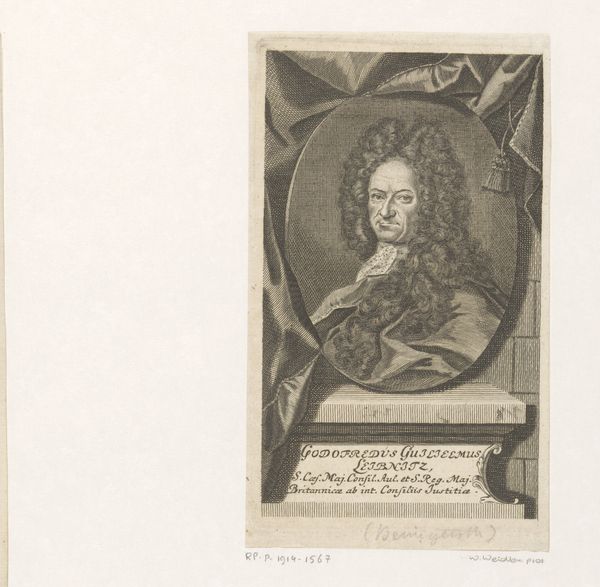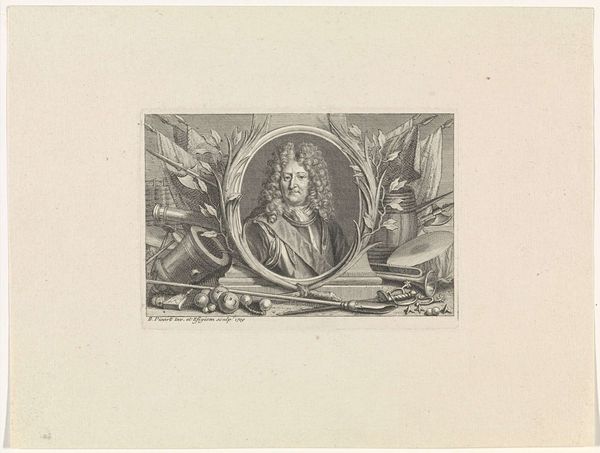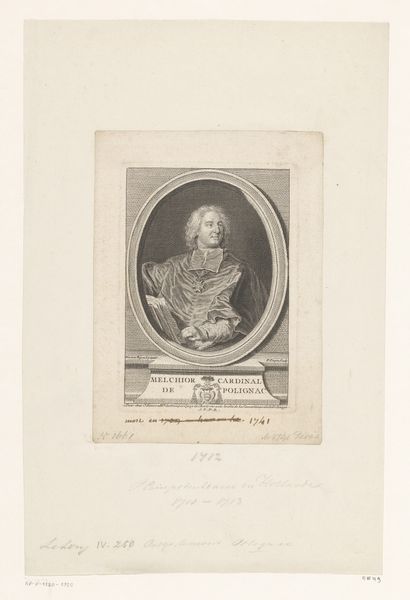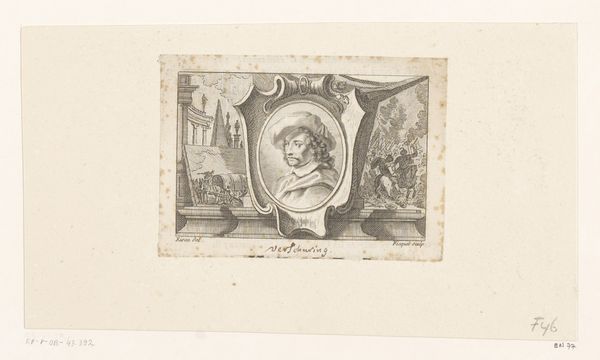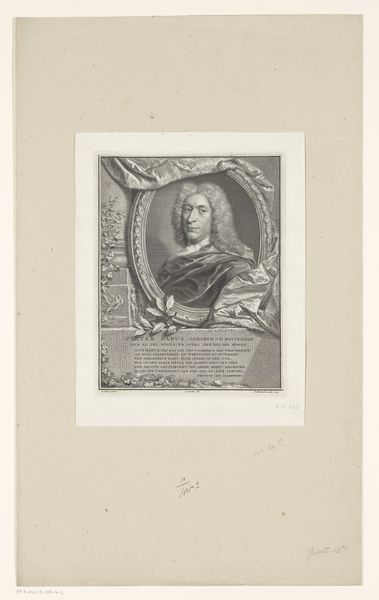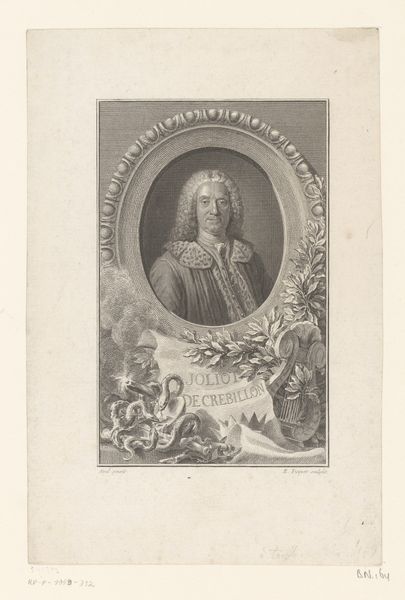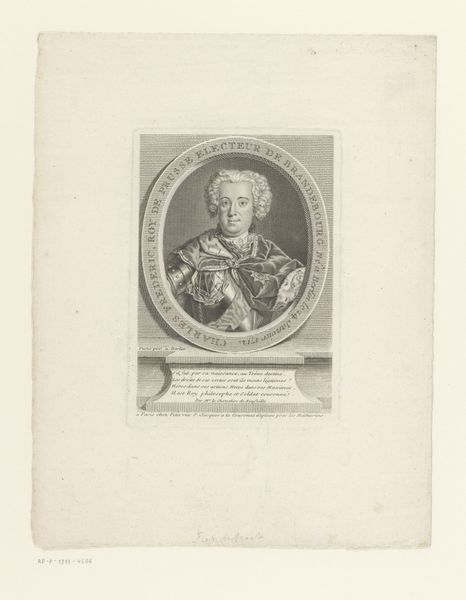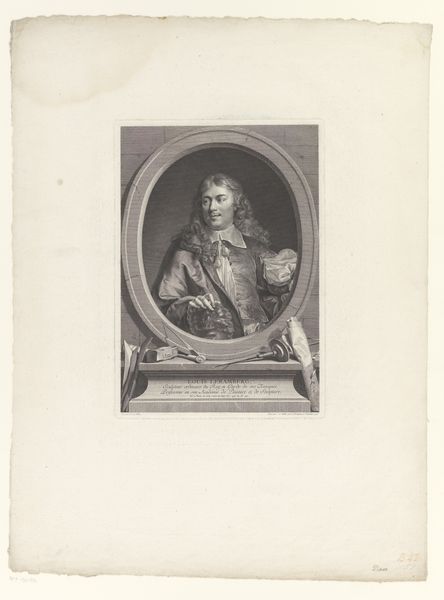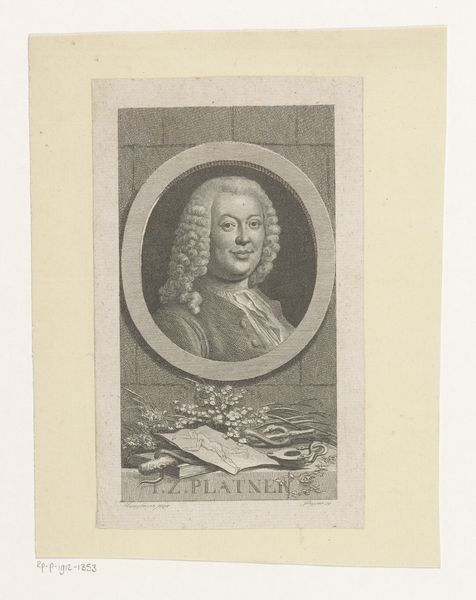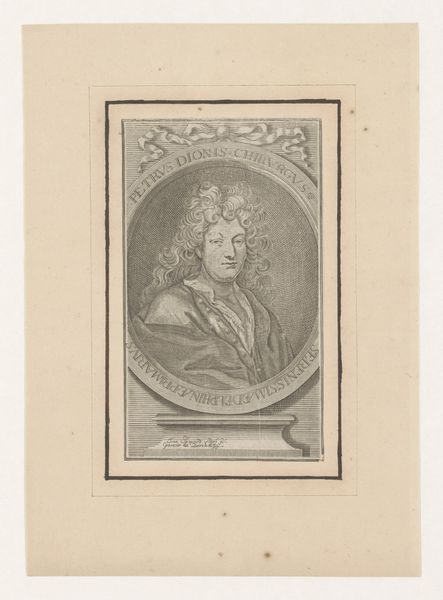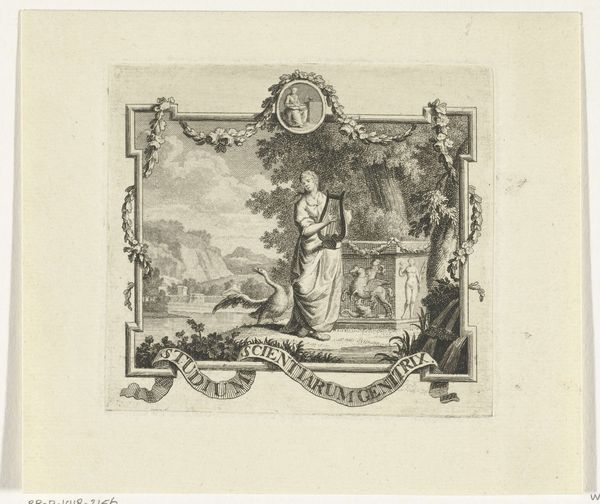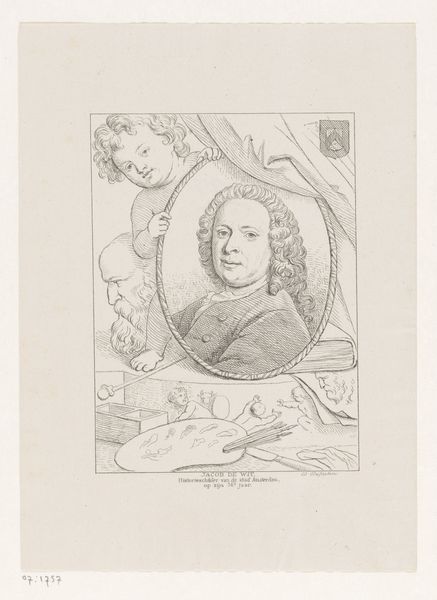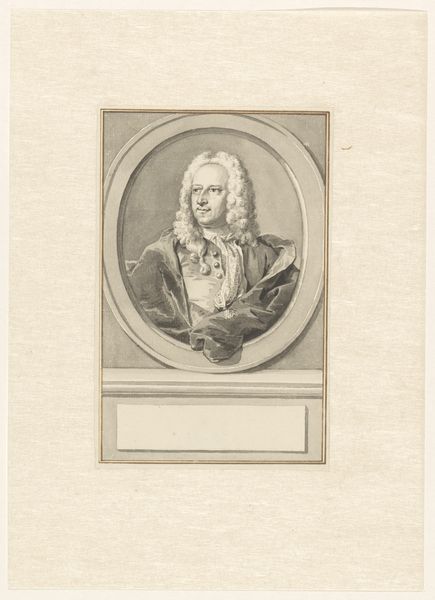
engraving
#
portrait
#
baroque
#
classicism
#
history-painting
#
academic-art
#
engraving
Dimensions: height 245 mm, width 169 mm
Copyright: Rijks Museum: Open Domain
Curator: My first impression is of intricate layers – everything rendered in a classical style that is both precise and lavish. Editor: Indeed. This is a portrait of René François de Beauvau du Rivau, captured between 1722 and 1775 by Georg Friedrich Schmidt. It's an engraving, that favors detail and linearity. Curator: And such detail! Look at the regalia framing his face, the mitre and crosier alluding to his clerical position. Even the books seem to breathe an academic air. The arrangement carries so much semiotic weight, doesn't it? Editor: Absolutely. The portrait seems calculated to project not just individual likeness, but institutional power. It speaks of baroque sensibility tempered by the rational clarity of classicism, notice the controlled use of shadow and line weight. Curator: The oval cartouche enclosing his visage certainly emphasizes a kind of authority and importance. The subject himself, appears calm and confident. A study in controlled emotion befitting his status. One might suggest it projects qualities associated with enlightened leadership of the time. Editor: The balance is indeed interesting; observe how Schmidt utilizes textures to delineate planes. His garments—rich fur against stiff clerical collar—and how this tactility provides cues about identity and even temperament. A fascinating composition of form and surface. Curator: Consider too how this image served as a kind of cultural shorthand, codifying and transmitting not just likeness, but an entire complex web of beliefs and values, that would communicate across different sectors of society at the time, reinforcing both authority and respect. Editor: I was captivated from the beginning by the framing—the ornamental arrangement suggesting prestige and order. It led me to consider the way artistic skill constructs these notions of societal importance through shape, texture, and, certainly, strategic compositional balance. Curator: Examining this engraving, it seems as if we peered into not only a specific figure, but also at how societies create heroes and symbols to transmit particular views. Editor: Yes, this visual exercise also shows how keen observation of structure could, in some measure, reveal a wider cultural structure during the late baroque period.
Comments
No comments
Be the first to comment and join the conversation on the ultimate creative platform.
